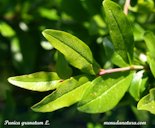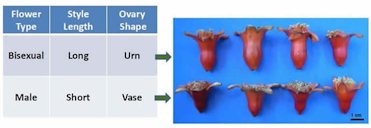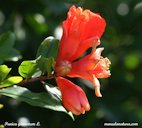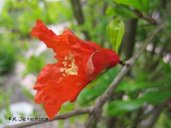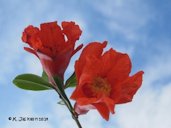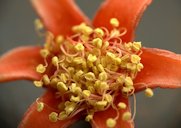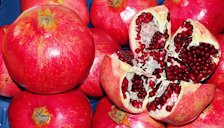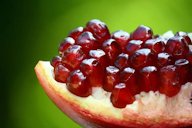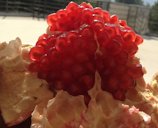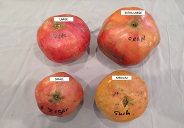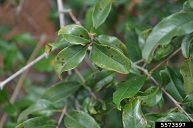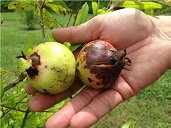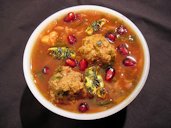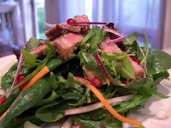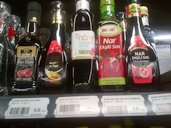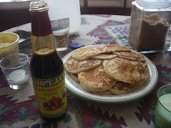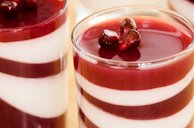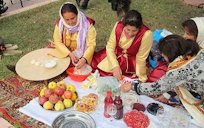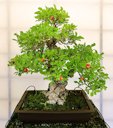| Pomegranate - Punica granatum | |||||||||||||||||||||||||||||||||||||||||||||||||||||||||||||||
|---|---|---|---|---|---|---|---|---|---|---|---|---|---|---|---|---|---|---|---|---|---|---|---|---|---|---|---|---|---|---|---|---|---|---|---|---|---|---|---|---|---|---|---|---|---|---|---|---|---|---|---|---|---|---|---|---|---|---|---|---|---|---|---|
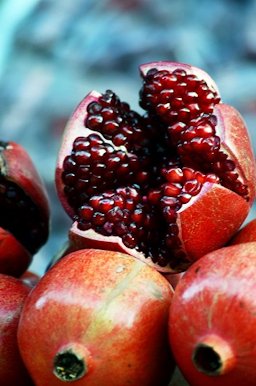 Fig. 1  Pomegranate, Punica granatum 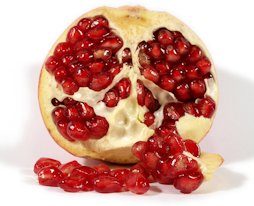 Fig. 2  Pomegranate in cross section 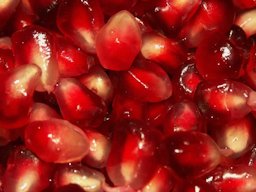 Fig. 3  Pomegranate seeds with their fleshy outgrowth (aril) 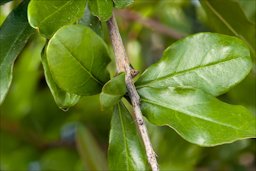 Fig. 4  P. granatum, Istria, Croatia  Fig. 5  New leaf growth 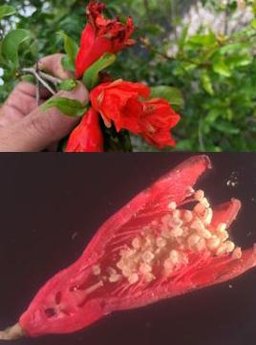 Fig. 8 Male flower (non-productive flower) 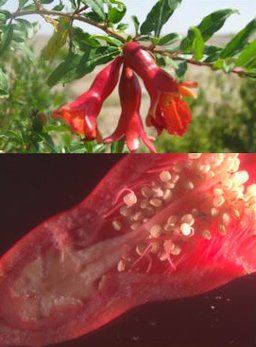 Fig. 9 Female flower (productive flower) 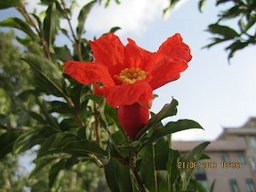 Fig. 10  Pomegranate blossom before pollination 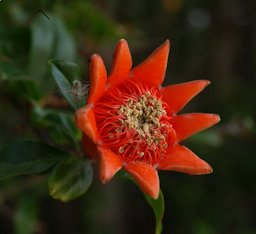 Fig. 11  Pomegranate sepals and drying stamens after fertilization and petal fall 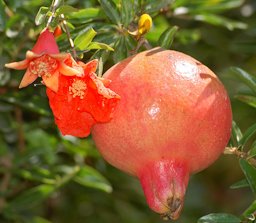 Fig. 12  Pomegranate fruit and two flowers at different stages 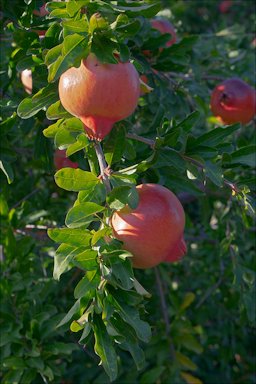 Fig. 18  Pomegranate blossom and fruit developing 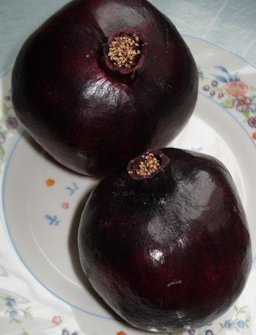 Fig. 19 Black pomegranate of Taft, Iran 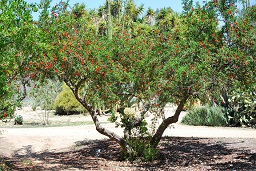 Fig. 27  Pomegranate tree at Fullerton Arboretum, Fullerton, CA 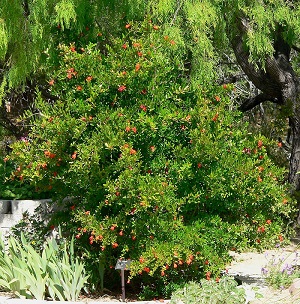 Fig. 28  P. granatum 'Nana' at the Springs Preserve garden in Las Vegas, Nevada 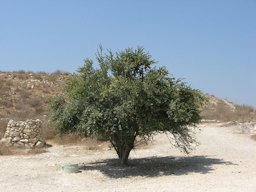 Fig. 29  P. granatum tree in Maresha Israel in August. Fruit is clearly seen on the tree.  Fig. 30  A Pomegranate tree loaded with fruit, an orchard in Sde Ya'akov, Israel 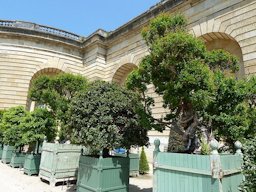 Fig. 31  Château de Versailles orangerie grenadiers en fleurs, France 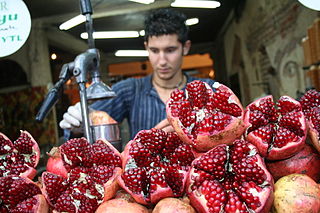 Fig. 34  A worker preparing fresh pomegranate juice from these pomegranate fruit. Photo taken at a market in Istanbul, Turkey. 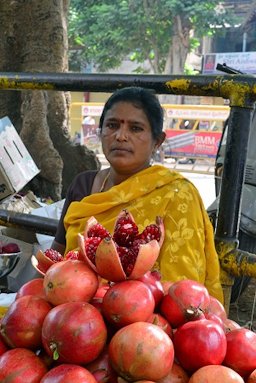 Fig. 35  Woman selling pomegranates, Mysore, India 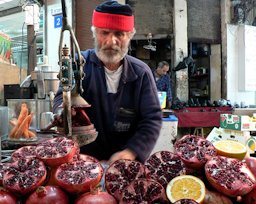 Fig. 36  The pomegranate man while walking through the Shuk Hacarmel, Israel 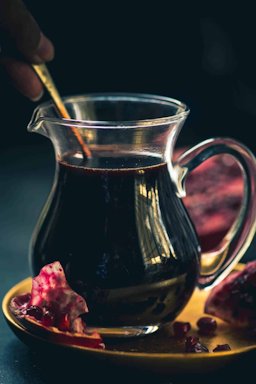 Fig. 37  Pomegranate molasses is an essential ingredient in traditional Middle Eastern cooking 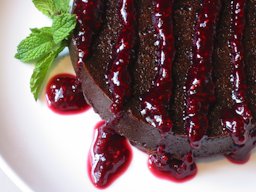 Fig. 38  Chocolate custard cake with raspberry-pomegranate sauce Fig. 39  Sumac dusted cauliflower steaks with pomegranate  Fig. 40  |
Scientific
name Punica granatum L. Common names English: pomegranate; French: balaustier, grenade, grenadier, grenadier vommun, grenadier d’Europe, pommier de Carthage; Spanish: granada, granado, grenada, grenadier, mangraner, mangrano 4,11 Other Common Names Synonyms Granatum punicum St.-Lag., P. florida Salisb., P. grandiflora hort. ex Steud., P. multiflora hort. ex Siebold & Voss, P. nana L., P. spinosa Lam. 11 Family Punicaceae/Lythraceae Origin Native from Iran to the Himalayas in northern India 4 USDA hardiness zones 7-10 Uses Eaten out of hand; juice; landscape specimen Height 10-12 ft (3-4 m) 2 Plant habit Dense, bushy, deciduous shrub; suckers freely from base 3 Growth rate Moderate Longevity Extremely long-lived, some specimens at Versailles known to have survived two centuries 4 Trunk/bark/branches Slender; somewhat thorny branches 8 Pruning requirement Light annual pruning; remove sprouts and suckers as they appear Leaves Glossy, dark green, oblong to oval, 1-1.25 in. (2.5-3 cm) long 3 Flowers Orange-red, 1.5-2.5 in. (4-6 cm); crinkled petals; numerous stamens; borne solitary or in small clusters 3 Fruits Berries; brownish-yellow to purplish-red berries; 2-5 in. (5-12 cm); smooth, leathery skin; spherical, somewhat flattened; persistent calyx 3,8 Season North Florida: July to Nov., South Florida: year round 3 USDA Nutrient Content pdf Light requirement Full sun Soil tolerances Grows best in deep, fairly heavy, moist soils; yields low in sand; fruit color poor in clay pH preference 5.5-7.0 3 Drought tolerance Moderate Flood tolerance Tolerant of some flooding 3 Aerosol salt tolerance Poor Soil salt tolerance Poor Cold tolerance 18 °F (-7.7 °C) Plant spacing Hedge: 6-9 ft (2-3 m); orchard/home: 10-16 ft (3-5 m) 3 Invasive potential * None reported Pest resistance Few serious pests in Florida Known hazard A tannin content of no more than 0.25% in the edible portion is the desideratum. Many studies have shown that tannin is carcinogenic and excessive ingestion of tannin from one or more sources, over a prolonged period, is detrimental to health. 4 Reading Material The Pomegranate, University of Florida pdf Growing Pomegranates in Florida: Establishment Costs and Production Practices, University of Florida pdf Pomegranate, Fruits of Warm Climates Pomegranate, Twelve Fruits Project, University of Hawai‘i at Mānoa Pomegranate, Just Fruits and Exotics nursery Pomegranate, California Rare Fruit Growers Pomegranates in Florida- Really? Vegetable and Specialty Crop News Although previously placed in its own family Punicaceae, recent phylogenetic studies have shown that Punica belongs in the family Lythraceae, and it is classified in that family by the Angiosperm Phylogeny Group. Origin Pomegranate, Punica granatum L. (Punicaceae), is a subtropical fruit in the order Myrtales. It is endemic to ancient Persia (Iran) from where it spread to surrounding areas, including parts of Asia. It was probably introduced into Greece and the area surrounding the Mediterranean Sea, as far west as Spain and Portugal by ancient sailors and traders. The species was brought to the New World by Franciscan priests who planted seeds or dormant cuttings in the garden of missions that they established, first in Mexico and later in California. Pomegranate trees are still grown in some of these California missions. 1 Description The pomegranate is a naturally bushy, multi-stemmed plant that tends to maintain its bushiness because of suckers routinely arising from the base. Plants grow to heights of 10-12 feet and commercially are often trained to a single trunk or sometimes three stems. The plant is normally deciduous. New spring shoots tend to be thin and weepy with thorns. The leaves are shiny and dark green. The plant is essentially monoecious with two types of showy flowers produced on new growth each spring. Flowering may occur over several months with some flowers still being produced into late summer/early fall, but the major bloom period is the spring. 2 The Biology of Pomegranates, Florida Pomegranate Association pdf Leaves Leaves are dark green, glossy, simple, opposite or in whorls, small and somewhat narrow, oblong to oval, clustered on short branchlets. 8
Fig. 6. Leaves opposite, lanceolate, bright green, with a short petiole and no stipules Flowers The flowers are initiated on the shoot terminals, singly or in clusters of two or more, when the trees become 4–5 years old. Anthesis begins in mid-June and extends into July. Thus, the species generally escapes spring frost damage. 1 The central terminal flower that emerges first usually sets, whereas the lateral ones, which are often sterile, abscise soon after blooming. 1 A flower is either male or hermaphroditic. The latter flower type is bell-shaped and self-fertile. Hermaphroditic flowers produce fruit. Male flowers are more trumpet-shaped and do not set fruit. Flower color for many cultivars is orange-red to brilliant red and there are some, especially ornamental types, with “double” flowers (i.e., with extra petals) or some that are pink, white, or some combination of those colors and red. Pollination primarily by insects (bees) leads to fruit set and the development of the inferior ovary. 2
Fig. 13. Flower type, style length and ovary shape Fig. 14. Different stages of the flowers Fruit The terms "seeds" and “aril” are often used interchangeably as if they defined the same thing which is not true. Technically speaking, the “seed” has two parts: the crunchy interior structure that is the part that contains the embryo and is sometimes eaten if it is not perceived to be too hard, and the juicy part or the aril. The aril is a fleshy outgrowth of the seed coat and provides the color of the juice. The mature pomegranate fruit is large, usually 3 inches in diameter, and sometimes as large as 4 to 5 inches. Fruit generally mature in 5 to 8 months and often change from round to a slightly squared-out shape. The fruit of different cultivars are quite diverse in their color, taste, and certain other traits. Peel color ranges from a light yellow to “black” or very dark red/purple. The fruit is distinctive because it retains the calyx (petals + sepals) at one end of the fruit giving the fruit the appearance at maturity of having a small crown attached to it. Internally, the fruit consists of a series of chambers (locules) separated by a membranous septum. Inside each chamber are the seeds which each have a fleshy outgrowth (aril) that contains the edible juice. The seeds range in hardness from very hard (not edible) to soft (easily consumed). The color of the arils also ranges from a light, virtually white, color to very dark red or purple. The flavor of the juice can be inedibly tart to bland to sweet or sweet/tart depending on acidity. 2 The seeds are small and angular and range in texture from hard to soft and chewable. 7 Produce fruit 3-4 years after planting; fruit ripens about 6 months after bloom. 6
Fig. 25. Size category, diameter: extra large ≥ 5 in., large 4-5 in., medium 2.5-4 in., small <2.5 in. Fig. 26. Pomegranate arils and seeds Varieties The ability of a cultivar to fruit under wet and humid conditions is crucial. 'Vietnam' is well suited to south Florida and central Florida. The tree bears a large crop from March through May, before the advent of the rainy season. The fruit is small and of fair quality. 'Plantation Sweet', selected in Georgia from a tree said to be more than 100 years old, is prolific, cold hardy, and bears a medium-large fruit that ripens in November. 'Big Red', a soft-seeded variety, has proven somewhat productive in Florida. 'Francis', originally from Jamaica, may have potential in south Florida in light of its origin in the humid tropics. Other promising cultivars include 'Fleishman', 'Purpleseed', 'Spanish Ruby', and 'Christine'. 7 Guide to Selecting Florida-Grown Pomegranates, University of Florida, CREC pdf Locally Grown Pomegranate Varieties in Florida Are Promising for the Future, Vegetable and Specialty Crop News Varieties Page Harvesting The fruits ripen 6 to 7 months after flowering. Growers generally consider the fruit ready for harvest if it makes a metallic sound when tapped. The fruit must be picked before over maturity when it tends to crack open if rained upon or under certain conditions of atmospheric humidity, dehydration by winds, or insufficient irrigation. Of course, one might assume that ultimate splitting is the natural means of seed release and dispersal. 4 Because the fruit does not ripen after being picked, harvest it only after it has reached full maturity. 6 Pollination The pomegranate is both self-pollinated and cross-pollinated by insects. There is very little wind dispersal of pollen. Self-pollination of bagged flowers has resulted in 45% fruit set. Cross-pollination has increased yield to 68%. In hermaphrodite flowers, 6 to 20% of the pollen may be infertile; in male, 14 to 28%. The size and fertility of the pollen vary with the cultivar and season. 4 Special Considerations Pomegranate trees are self-pollinating. Severe fruit drop during the plant’s juvenile period (3‒5 years) is not uncommon. Fruit drop is aggravated by practices favoring vegetative growth, such as over-fertilization and excess irrigation. Avoid putting young trees under stressful conditions. Fruit drop is less severe on mature trees than on younger trees. 3 In southern Florida, fruit development is enhanced after a cold winter. 4 Propagation Pomegranates root readily from hardwood cuttings taken in winter during pruning. Although the size of the wood does not seem to affect rooting, pencil-sized cuttings are easiest to work with. Cut sections about 6 to 14 inches long, dip them in rooting hormone, and stick them upright in containers of well-drained potting soil. In spring after the cuttings begin growing, transplant them into gallon containers and allow them to continue growing for 4 to 6 weeks before planting them in the ground. Because the plants have performed well on their own roots, rootstocks have not been needed. 6 Seed-propagated plants do not come true-to-type, but seeds will germinate in 45‒60 days. Layering is also successful but more labor-intensive. 3 They have a relatively short juvenile period and can begin flowering in one year, but more typically after 2 or 3 years. 2 Propagation and Pruning, University of Florida, CREC Planting Pomegranates produce best on deep, heavy loams, but are adapted to many soil types from pure sand to heavy clay. Yields are usually low on sands, while fruit color is poor on clays. Growth on alkaline soils is poor. Optimum growth is associated with deep, fairly heavy, moist soils in the pH range of 5.5-7.0. 3 Plant trees in early spring (February‒March), avoiding late frost. Soil should be loosely worked and not wet. When used as a hedge, plants are spaced 6-9 ft (2-3 m) apart. Suckers will fill spaces and produce a compact hedge. The spacing of 10-16 ft (3-5 m) between plants and 13-20 ft (4‒6 m) between rows are used for orchards, and similar spacing should be maintained for dooryard trees. 3 Superfood Success: UF Researcher Studying Pomegranates’ Future in Florida, Vegetable and Specialty Crop News Can Pomegranates Be Procuced in Florida's Climate? Vegetable and Specialty Crop News Pruning Initially, the plants are cut back to 24 to 30 in (60-75 cm) in height and after they branch out the lower branches are pruned to provide a clear main stem. Inasmuch as fruits are borne only at the tips of new growth, it is recommended that, for the first 3 years, the branches be judiciously shortened annually to encourage the maximum number of new shoots on all sides, prevent straggly development, and achieve a strong, well-framed plant. After the 3rd year, only suckers and dead branches are removed. 4 Fruit that touches the ground will rot or be damaged by pests. 3 Training The plants are often trained to one to three trunks with an open vase canopy. In some instances, a single trunk is formed and three main branches diverge 1 or 2 ft from the ground to form the open vase. 2 Pomegranate Pruning Techniques, Vegetable and Specialty Crop News Fertilizing Guidelines for Pomegranate Nutrient Management in Florida, University of Florida pdf Irrigation Thoroughly water the plants at planting and again 2 to 4 weeks after planting. Begin a once-a-week schedule when the plants leaf out. Once the trees are established, water them about every 7 to 10 days. 6 During maturation, it is usually recommended to reduce the irrigation gradually in order to reduce splits but also to enhance flavor and color development. Summer rains might be an issue in some parts of Florida. Sudden changes in irrigation amounts and timing often lead to fruit splitting, especially a few weeks before harvesting. Maintain adequate soil moisture in late summer and early fall to reduce potential fruit splitting. 3 The roots of the pomegranate tree do not tolerate long periods of standing water, especially during the growing season, because the limited amount of dissolved oxygen is rapidly depleted as the water stagnates. 1 Pests Page In Asia, it is common to use protective wrapping or fruit bags on pomegranate once the fruit is set. This helps to prevent damage from pests and diseases. It also helps produce even fruit coloration. 12 Diseases The most destructive disease observed on trees in Florida is anthracnose caused by Colletotrichum sp. (Fig. 32,33). It can affect leaves, stems, flowers, and fruit. Leaf symptoms include small, circular to angular, dark, reddish-brown to black areas, 0.25 in (4‒5 mm) in diameter. Infected leaves are pale green and fall prematurely. Fruit symptoms are small, conspicuous, dark brown spots, initially circular, becoming irregular. At least three sprays per year of neutral copper fungicide can reduce the disease impact. 3
Fig. 32. Black to brown necrotic depressed spots appeared on the leaves with circular margin, in advanced stage, spots coalesced and resulted in bigger patches, lead to defoliation Fig. 33. Anthracnose caused by Colletotrichum sp. to pomegranate fruit Diseases of Pomegranate in Florida, University of Florida, Gulf Coast Research and Education Center pdf Food Uses Pomegranates are commonly eaten fresh. Some of the new varieties have soft seeds that can be eaten with the fleshy pulp. The fruit juice can be made into a beverage or syrup and can be blended with other juices. An emerging trend in the commercial industry is to sell bags of arils to be eaten fresh. 6 In the home kitchen, the juice can be easily extracted by reaming the halved fruits on an ordinary orange-juice squeezer. 4 In the Middle east, Caucasus and India, pomegranate juice is a very popular beverage. Pomegranate juice is widely made into grenadine syrup for use in mixed drinks, cocktails and often processed into wine. In Saudi Arabia, the juice sacs may be frozen intact or the extracted juice may be concentrated and frozen, for future use. 11 In northern India, a major use of the wild fruits is for the preparation of "anardana"– the juice sacs being dried in the sun for 10 to 15 days and then sold as a spice. 4 The pomegranate has an exceptionally long shelf life, especially when refrigerated. 7
Fig. 41. A bowl of ''ash-e anar'' (Persian pomegranate soup) Fig. 42. Leftover roast beef rib-eye salad with pomegranate vinaigrette Fig. 43. Pomegranate sour (nar ekşisi in Turkish) and the cheaper "nar ekşili sos" (sauce with pomegranate sour) on supermarket shelves in Ankara Fig. 44. Pomegranate molasses on pancakes Fig. 45. Pomegranate lemon panna cotta Fig. 46. "Narsharab" - pomegranate sauce (condiment of Turkey) Fig. 47. Pomegranate mojitos, a super cocktail! Fig. 48. Pomegranate martini Fig. 49. Infused pomegranate water Selecting and Storing Pomegranates, University of Florida, Volusia County How to Eat a Pomegranate, University of Florida and Wikihow Medicinal Properties ** There is a significant body of research indicating that pomegranates boost heart health. Studies reveal that the diverse and rich antioxidant content decreases inflammation and thickening of the artery walls. Pomegranate juice also seems to prevent blood cells called platelets from clumping together, reducing the buildup of cholesterol and plaque. Other research indicates reduction of blood cholesterol and blood pressure when pomegranate juice is included in a well-balanced diet. Scientists attribute heart healthy benefits to polyphenols, including anthocyanins, which are plant pigments that give the pomegranate its attractive red hue. 5 The thick, leathery rind of the fruit, the bark and leaves are rich sources of various polyphenolics or tannins, especially punicalagins. These phenolics, ascorbic acid and anthocyanins act as antioxidants with varying capacity to scavenge for free radicals which are harmful to cells. 1 Various parts of the pomegranate plant have been extensively used for thousands of years in traditional medicine in the Middle East, Ancient Greece and Asia. 11 Pomegranate Health Benefits, University of Florida, Volusia County Other Uses All parts of the tree have been utilized as sources of tannin for curing leather. The trunk bark contains 10 to 25% tannin and was formerly important in the production of Morocco leather. The root bark has a 28% tannin content, the leaves, 11%, and the fruit rind as much as 26%. The latter is a by-product of the "anardana" industry. Both the rind and the flowers yield dyes for textiles. Ink can be made by steeping the leaves in vinegar. In Japan, an insecticide is derived from the bark. The pale-yellow wood is very hard and, while available only in small dimensions, is used for walking-sticks and in woodcrafts. 4 The juice is extracted and made into jelly or marketed as unfermented or fermented liquor, grenadine. 1 Most commercial products no longer use real pomegranate juice. 7 General The pomegranate has a deep association with the cultures of the Mediterranean region and Near East, where it is savored as a delicacy and is an important dietary component, revered in symbolism, and greatly appreciated for its medicinal properties. 9 Say "I Do” to Pomegranates. During the Persian wedding ceremony, a basket of pomegranates is placed on the ceremonial cloth to symbolize a joyous future. In Turkey, after the marriage ceremony, the bride throws a pomegranate on the ground. The number of arils that fall out are believed to indicate how many children she will have. In Crete, when a bride enters her new home, the groom hands her a pomegranate. In China, a picture of a ripe, open pomegranate is a popular wedding present, expressing the wish, “May you have as many children as there are seeds!” 10 For the people of Central Asia, the pomegranate is a symbol of plenty, and a potent local medicine. Considered a sacred plant, the wood was not burned. In ancient times there was a considerable trade in pomegranate petals as a source of fast red dyes, but how these were prepared is not currently known. 13 The juice with a very high antioxidant benefit to fight many diseases is bright red in color and is used in the preparation of many drinks with a promise of health benefits. The name Punica is the feminized Roman name for Carthage, the ancient city in northern Tunisia from which the best pomegranates came to Italy. It was initially known as Malum punicum, the apple of Carthage. But Linneaus selected the current name, with the specific epithet granatum, meaning seedy or grainy. 9
Fig. 50. Stamp of Romania, P. granatum Fig. 51. Pomegranate Festival is an annual cultural festival that is held in Goychay, Azerbaijan; women are making lavash bread Fig. 52. P. granatum, China Kashgar (Xinjiang province) Fig. 53. Arms of Kingdom of Granada (Crown of Castile), Coat of Arms of Spain Template Fig. 54. Jewish Torah ornaments in the shape of pomegranates Fig. 55. Pomegranate (P. granatum), Moyogi style, about 50 years old, at the Bonsai museum in Pescia, Italy Further Reading Pomegranate, Aggie Horticulture®, Texas A&M AgriLife Extension pdf Pomegranate Culture in Central Asia, West Australian Nut and Tree Crop Pomegranate in Florida for Commercial Enterprises and Homeowners, Hort Science pdf Considerations for Planting a Pomegranate Orchard, University of Florida pdf Pomegranate Production, University of Georgia, Extension pdf Southern Heirloom Pomegranate Preservation Project, PomNatural pdf Pomegranates for Now, UF/IFAS Citrus Extension ext. link Pomegranate Botanical Art Older material The pomegranate, Agricultural Experiment Station, Berkeley, Cal. 1917 pdf List of Growers and Vendors |
||||||||||||||||||||||||||||||||||||||||||||||||||||||||||||||
| Bibliography 1 The Encyclopedia of Fruit & Nuts. Edited by Jules Janick and Robert E. Paull, Cambridge, CABI, 2008. 2 Castle, Bill. "Pomegranates for Now." UF/IFAS Citrus Extension, Last Modified 7 May 2013, crec.ifas.ufl.edu. Accessed 8 Aug. 2014. 3 Sarkhosh, Ali, and Jeff Williamson. "The Pomegranate." Horticultural Sciences Dept., UF/IFAS Extension, Original Pub. Apr. 1994, Revised Oct. 2018, Reviewed 6 Apr. 2022, AskIFAS, edis.ifas.ufl.edu/mg056. Accessed 24 Feb. 2017, 11 Aug. 2018, 20 July 2024. 4 Fruits of Warm Climates. Julia F. Morton, Miami, 1987. 5 Taufer, Jill. "Pomegranate Health Benefits." Family and Consumer Sciences, UF/IFAS Volusia County Extension, crec.ifas.ufl.edu. Accessed 8 Aug. 2014. 6 Stein, Larry, et al. "Pomegranates." Aggie Horticulture®, Texas A&M AgriLife Extension, aggie-horticulture.tamu.edu. Accessed 16 Dec. 2016. 7 Boning, Charles R. Florida's Best Fruiting Plants- Native and Exotic Trees, Shrubs, and Vines. Sarasota, Pineapple Press, 2006. 8 "Pomegranate (Punica granatum)." Gardening Solutions, UF/IFAS Extension, Plant Identification Learning Module: Fruits and Nuts, Last modified 6 June 2009, gardeningsolutions.ifas.ufl.edu/mastergardener/outreach/plant_id/fruits_nuts/pomegranate.html. Accessed 21 Nov. 2018. 9 Stover, Ed, and Eric W. Mercure. "The Pomegranate: A New Look at the Fruit of Paradise." HortScience, Vol. 42, no. 5 1088-1092, Aug. 2007, hortsci.ashspublications.org/content/42/5/1088.full. Accessed 21 Nov. 2018. 10 "Say “I Do” to Pomegranates." Pomegranate History, Folklore, and legend, Pomegranate Council, www.pomegranates.org/history-folklore-legend/. Accessed 28 Aug. 2019. 11 Lim, T. K. "Edible medicinal and non-medicinal plants, Fruits, vol. 5." ZLibrary, 2013, b-ok.cc/book/2145025/84910f?dsource=recommend. Accessed 31 Aug. 2021. 12 Love, Ken, et al. "Pomegranate." Twelve Fruits With Potential Value-Added and Culinary Uses, University of Hawai'i at Mānoa, College of Tropical Agriculture and Human Resources, 2007. Accessed 29 Dec. 2015. 13 Burmistrov, Leonid A. Vavilov Institute of Plant Industry, Russia "Pomegranate Culture in Central Asia." WANATCA Yearbook 17, 1993, West Australian Nut and Tree Crop Association, Vavilov Institute of Plant Industry, Wayback, wayback.archive-it.org/1941/20100524190008/http://www.wanatca.org.au/. Accessed 5 Jan. 2019. Photographs Fig. 1 Binu, Augustus. "Pomegranate." Wikipedia, 2014, (CC BY-SA 3.0), wikipedia.org. Accessed 15 Dec. 2016. Fig. 2 "Punica granatum L." Acta Plantarum - Flora delle Regioni italiane, 20 Oct. 2010, (CC BY-NC-ND 4.0), www.floraitaliae.actaplantarum.org/viewtopic.php?t=42537&p=272629#p272629. Accessed 28 Aug. 2021. Fig. 3 "Pomegranate seeds with their fleshy outgrowth (aril)." UF/IFAS Citrus Extension, 2013, crec.ifas.ufl.edu. Accessed 8 Aug. 2014. Fig. 4 Trnkoczy, Amadej. "Punica granatum L., Istria, Croatia." Flickr, 1 Sept. 2017, (CC BY-NC-SA 2.0), www.flickr.com/photos/32503151@N05/38029646832. Accessed 28 Aug. 2021. Fig. 5 Mokkie. "Pomegranate." Wikimedia Commons, 2014, (CC BY-SA 3.0), commons.wikimedia.org. Accessed 23 Feb. 2017. Fig. 6,14 Casanova, Manel. "Punica granatum L." Menuda Natura, 3 Jan. 2012, (CC BY-NC-SA 3.0), www.menudanatura.com/2012/01/punica-granatum-l.html. Accessed 28 Aug. 2021. Fig. 7 "Punica granatum L." Acta Plantarum - Flora delle Regioni italiane, ID 6272, Feb. 2016, (CC BY-NC-ND 4.0), www.floraitaliae.actaplantarum.org/viewtopic.php?t=90037&p=574723#p574723. Accessed 28 Aug. 2021. Fig. 8,9 Sarkhosh, Ali. "Female flower (productive flower); male flower (non-productive flower)." The Pomegranate, Horticultural Sciences Dept., UF/IFAS Extension, 2011, AskIFAS, edis.ifas.ufl.edu/mg056. Accessed 4 Jan. 2019. Fig. 10 Diako1971. "Pomegranate blossom." Wikimedia Commons, 2013, (CC BY-SA 3.0), wikipedia.org. Accessed 15 Dec. 2016. Fig. 11 Barghaan, Uwe. "Pomegranate sepals and drying stamens after fertilization and petal fall." Wikipedia, 2008, (CC BY 3.0), GFDL, wikipedia.org. Accessed 15 Dec. 2016. Fig. 12 Xenon. "Pomegranate fruit and two flowers of different stage." Wikimedia Commons, 2006, Public Domain, commons.wikimedia.org. Accessed 28 July 2015. Fig. 13 Porter, Justin, and Hazel Y. Wetzstein. "The Biology of Pomegranates: All about Flowers, Fruit and Arils." Florida Pomegranate Association, University of Georgie/Purdue University, 10 Oct, 2014. Accessed 15 Dec. 2016. Fig. 15,16 Jackson, Karen. "Pomegranate Series." 2014, www.growables.org. Fig. 17 Sankarshansen. "Macro shot of a pomegranate flower." Wikimedia Commons, 2011, (CC BY-SA 3.0), commons.wikimedia.org. Accessed 23 Feb. 2017. Fig. 18 Trnkoczy, Amadej. "Punica granatum L., Istria, Croatia." Flickr, 18 Mar. 2019, (CC BY-NC-SA 2.0), www.flickr.com/photos/32503151@N05/47362098332#. Accessed 28 Aug. 2021. Fig. 19 Cimorges. "Black Pomegranate of Taft, Iran." Wikimedia Commons, 2008, Public Domain, commons.wikimedia.org. Accessed 24 Feb. 2017. Fig. 20 Tulkens, Tom. "Developing fruits, Mozambique." Wikimedia Commons, 2012, (CC BY-SA 2.0), commons.wikimedia.org. Accessed 28 July 2015. Fig. 21 Tomomarusan. "Punica granatum." Wikimedia Commons, 20 Nov. 2005, GFDL, (CC BY-SA 3.0), commons.wikimedia.org/wiki/File:Granatum2.JPG. Accessed 29 Aug. 2021. Fig. 22 Jorgens.mi/Wikipedia. "Granatäpfel." Wikimedia Commons, 2008, (CC BY-SA 3.0), commons.wikimedia.org. Accessed 28 July 2015. Fig. 23 Croos, Anton. "Punica granatum seeds can be seen through an opened pomegranate." Wikimedia Commons, 2012, commons.wikimedia.org. Accessed 13 June 2014. Fig. 24 Sajjad, Umais Bin. "A pomegranate peeled to show red shining seeds." Wikimedia Commons, 2014, (CC BY-SA 4.0), commons.wikimedia.org. Accessed 28 July 2015. Fig. 25 "Pomegranate size, Cultivar Selection Guide for Florida-Grown Pomegranates: Horticultural Traits." UF/CREC, crec.ifas.ufl.edu/extension/pomegranates/pom_guide.html. Accessed 20 Nov. 2018. Fig. 26 Buono, Vito. "Punica granatum L." Acta Plantarum - Flora delle Regioni italiane, 20 Oct. 2010, (CC BY-NC-ND 4.0), www.floraitaliae.actaplantarum.org/viewtopic.php?t=42537&p=272629#p272629. Accessed 28 Aug. 2021. Fig. 27 Hall, Tracie. "Pomegranate tree at Fullerton Arboretum. Fullerton, CA." Flickr, April 16, 2014, (CC BY-SA 2.0), www.flickr.com/photos/twobears2/13970997021/. Accessed 2 Sept. 2018. Fig. 28 Shebs, Stan. "Photo of Punica granatum 'Nana' at the Springs Preserve garden in Las Vegas, Nevada." Wikimedia Commons, 2005, commons.wikimedia.org. Accessed 28 July 2015. Fig. 29 יעקב. "Punica granatum tree in Maresha Israel in August. Fruit is clearly seen on the tree." Wikimedia Commons, 2007, commons.wikimedia.org. Accessed 28 July 2015. Fig. 30 Amnon s. "A Pommegranate tree loaded with fruit, an orchard in Sde Ya'akov, Israel." Wikimedia Commons, 2005, (CC BY-SA 2.0), commons.wikimedia.org. Accessed 23 Feb. 2017. Fig. 31 Djampa. "Château de Versailles orangerie grenadiers en fleurs." Wikimedia Commons, 2013, GFDL, commons.wikimedia.org. Accessed 23 Feb. 2017. Fig. 32 Seethapathy, Parthasarathy. "Bitter rot and anthracnose (Colletotrichum gloeosporioides), pomegranate (Punica granatum L.) Foliage." Tamil Nadu Agricultural University, no. 5573597, Forestry Images, 6 Aug. 2018, Bugwood.org, (CC BY-NC 3.0 US), www.forestryimages.org/browse/detail.cfm?imgnum=5573597. Accessed 5 Jan. 2019. Fig. 33 Vallad, G. "Anthracnose caused by Colletotrichum sp. to pomegranate fruit." Horticultural Sciences Dept., UF/IFAS Extension, AskIFAS, edis.ifas.ufl.edu/mg056. Accessed 5 Jan. 2019. Fig. 34 May, J. H. "A worker preparing fresh pomegranate juice from these pomegranate fruit. Photo taken at a market in Istanbul, Turkey." Wikimedia Commons, 2006, commons.wikimedia.org. Accessed 13 June 2014. Fig. 35 Fynn, Christopher J. "Woman selling pomegranates, Mysore." Wikimedia Commons, 2015, (CC BY-SA 4.0), commons.wikimedia.org. Accessed 23 Feb. 2017. Fig. 36 Roshnii Rose. "The Pomegranate Man While walking through the Shuk Hacarmel." Flickr, 2005, (CC BY-NC-SA 2.0), flickr.com. Accessed 23 Feb. 2017. Fig. 37 Mahur, Neha. "Pomegranate Molasses." Whisk Affair, 15 Mar. 2021, www.whiskaffair.com/pomegranate-molasses-recipe/. Accessed 29 Aug. 2021. Fig. 38 Ana. "Chocolate custard cake with raspberry-pomegranate sauce." Dulcedo, 4 May 2008, (CC BY-NC 3.0), dulcedoblog.blogspot.com/2008/05/chocolate-custard-cake-with-raspberry.html. Accessed 29 Aug. 2021. Fig. 39 "Sumac dusted cauliflower steaks with pomegranate." May I have that recipe?, 14 Jan, 2013, Foodista, (CC BY-NC 3.0), www.foodista.com/recipe/QCL4V4GC/sumac-dusted-cauliflower-steaks-with-pomegranate. Accessed 29 Aug. 2021. Fig. 40 Tapdix. "Nar DSC 0787." Wikimedia Commons, 29 Sept. 2014, EOL, (CC BY-3.0), eol.org/media/7017198. Accessed 21 Nov. 2018. Fig. 41 Sucher, Danielle E. "A bowl of ''ash-e anar'' (Persian pomegranate soup)." Wikimedia Commons, 2007, commons.wikimedia.org. Accessed 28 July 2015. Fig. 42 Alpha. "Leftover roast beef rib-eye salad with Pomegranate vinaigrette." Wikimedia Commons, Melbourne, Australia, 2006, (CC BY-SA 2.0), commons.wikimedia.org. Accessed 28 July 2015. Fig. 43 E4024. "Pomegranate sour (Nar ekşisi in Turkish) and the cheaper "nar ekşili sos" (sauce with pomegranate sour) on supermarket shelves in Ankara." Wikimedia Commons, 2015, (CC BY-SA 4.0), commons.wikimedia.org. Accessed 28 July 2015. Fig. 44 Mikol. "Pomegranate Molasses." Wikimedia Commons, 2006, (CC BY-SA 2.0), commons.wikimedia.org. Accessed 23 Feb. 2017. Fig. 45 Jeanroy, Amy. "Pomegranate Lemon Panna Cotta." Use Real Butter, 23 Nov. 2013, Foodista, (CC BY 3.0), www.foodista.com/blog/2013/11/23/pomegranate-lemon-panna-cotta. Accessed 29 Aug. 2021. Fig. 46 А. Кабанов. "Narsharab" - pomegranate sauce." Wikimedia Commons, 2011, (CC0 1.0), commons.wikimedia.org. Accessed 23 Feb. 2017. Fig. 47 Nguyen, Nam. "Pomegranate Mojitos, A Super Cocktail!" The Culinary Chronicles, 8 Apr. 2013, (CC BY-ND 3.0 US), theculinarychronicles.com/2013/04/08/pomegranate-mojitos-a-super-cocktail/. Accessed 29 Aug. 2021. Fig. 48 Townsend, Giangi. "Pomegranate Martini." Foodista, 24 Apr. 2019, (CC BY 3.0), foodista.com/recipe/5ZK3VZDZ/pomegranate-martini. Accessed 29 Aug. 2021. Fig. 49 Nalawlescape. "Infused pomegranate water." Pixabay, Public domain, pixabay.com. Accessed 24 Feb. 2017. Fig. 50 Butko, Andrew. "Stamp of Romania. Punika Granatum." Wikimedia Commons, 1971, Public Domain, commons.wikimedia.org. Accessed 23 Feb. 2017. Fig. 51 Moonsun1981. "Pomegranate Festival is an annual cultural festival that is held in Goychay, Azerbaijan. Women are making lavash bread." Wikimedia Commons, 2011, (CC BY-SA 3.0), commons.wikimedia.org. Accessed 23 Feb. 2017. Fig. 52 Rijavec, Miran. "Punica Granatum. China Kashgar (Xinjiang province)." Flickr, 2007, (CC BY 2.0), flickr.com. Accessed 23 Feb. 2017. Fig. 53 Heralder. "Arms of Kingdom of Granada (Crown of Castile)- Coat of Arms of Spain Template." Wikimedia Commons, 2011, (CC BY-SA 3.0), commons.wikimedia.org. Accessed 24 Feb. 2017. Fig. 54 Horsch, Willy. "Torah Finials (Rimonim) and jewish ceremonial objects in the permanent exhibition in Kölnisches Stadtmuseum, in Cologne Germany." Wikimedia Commons, 1 Feb. 2014, (CC BY 3.0), commons.wikimedia.org/wiki/File:Zeughausmuseum_Köln._Rimonim,_Torakrone,_Mantel,_Zeiger_und_Schild.jpg. Accessed 27 Aug. 2021. Fig. 55 Sailko. "Pomegranate (Punica granatum), Moyogi style, about 50 years old, at the Bonsai museum in Pescia, Italy." Wikimedia Commons, 28 Aug. 2018, (CC BY-SA 4.0), commons.wikimedia.org/wiki/File:Pescia,_museo_del_bonsai,_punica_granatum,_stile_moyogi_(eretto_informale),_con_frutti.jpg. Accessed 29 Aug. 2021. * UF/IFAS Assessment of Non-native Plants in Florida's Natural Areas ** Information provided is not intended to be used as a guide for treatment of medical conditions. Published 13 June 2014 LR. Last update 20 July 2024 LR |
|||||||||||||||||||||||||||||||||||||||||||||||||||||||||||||||
